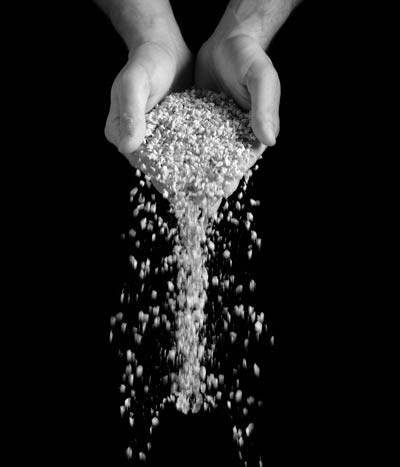 Scientists estimate that there are 5 trillion tons of plastic in the world’s oceans. FIVE TRILLION!* It’s hard to wrap your head around that number, isn’t it? Couple that with the ever-increasing global demand for plastic, and the oil it is derived from, and you have a perfect storm. Thankfully, plastic is recyclable. Today we’ll look at some approaches to plastic recycling, and dive into the benefits of sustainable injection molding.
Scientists estimate that there are 5 trillion tons of plastic in the world’s oceans. FIVE TRILLION!* It’s hard to wrap your head around that number, isn’t it? Couple that with the ever-increasing global demand for plastic, and the oil it is derived from, and you have a perfect storm. Thankfully, plastic is recyclable. Today we’ll look at some approaches to plastic recycling, and dive into the benefits of sustainable injection molding.
First, let’s consider the use of plastics during the plastic injection molding process. For parts to be formed, molten material must travel through channels known as runners into the mold’s cavities. Once the parts have set, the plastic strip-like pieces formed within the runners, ironically also known as runners, have served their purpose. This excess plastic may be as much as 50% of the job’s material usage! That creates a tremendous amount of plastic that’s ripe for recycling.
How Do Injection Molders Recycle Plastic?

A robotic arm picks up the runners, and feeds them into the grinder for in-line recycling.
There are several ways a manufacturer can handle this excess material. In many cases, they will simply collect it, and send it out for recycling. A third party will take the plastic, which will eventually be recycled. To complete the cycle, the fabricator may buy recycled plastic to use as raw material for production. While this does help conserve resources, the processes to properly recycle plastic are complex, costly and demand more natural resources.
Alternatively, plastic shops may recycle in-house. There are two main methods of doing this:
- They collect the excess material during production, then send it to another part of the facility for regrind and reuse.
- In modern automated shops, like Plastic Design, the material is collected, reground and reused in-line, as part of an extremely efficient plastic injection process.
So, why go through all this effort to recycle plastic?
Resource Conservation
It’s pretty simple. Using recycled material helps conserve valuable natural resources such as oil. By keeping waste out of landfills, the manufacturer is contributing to a circular economy, giving materials a second life.
Waste Reduction
Keep in mind that about half of the material used in the plastic injection molding process doesn’t make it into the finished components. By capturing and recycling this plastic, significant amounts of waste are avoided, along with the costs it takes to handle, store and dispose of it. Putting less waste into the environment results in a much more sustainable manufacturing process.
Cost Reduction
While recycled plastic tends to cost more than virgin material, utilizing an optimal in-line recycling process actually drives material costs down. This is due to the many operational efficiencies it brings, across many departments. Think about it for a moment – it costs nothing to ship material that’s already in the building. There’s less handling required on the shop floor, thanks to automation. Since little disposal is required, associated fees are greatly reduced as well. The purchasing team also has less buying to do. There’s less raw material to stock, which means lower carrying costs.
Most industries can benefit from working with injection molders that are committed to a sensible recycling program. There are certainly some exceptions, such as the medical field or others that have strict requirements aimed at avoiding contamination. Otherwise, recycling plastics within the injection molding process brings many benefits to manufacturers, the environment, and, yes, the bottom line.
Can You Benefit from Using Recycled Plastics?
We’ve helped lots of brands reduce their carbon footprint and help keep plastic injection molding prices in check. Contact us now to see how we can assist you.
*SOURCE: National Geographic

Comments are closed